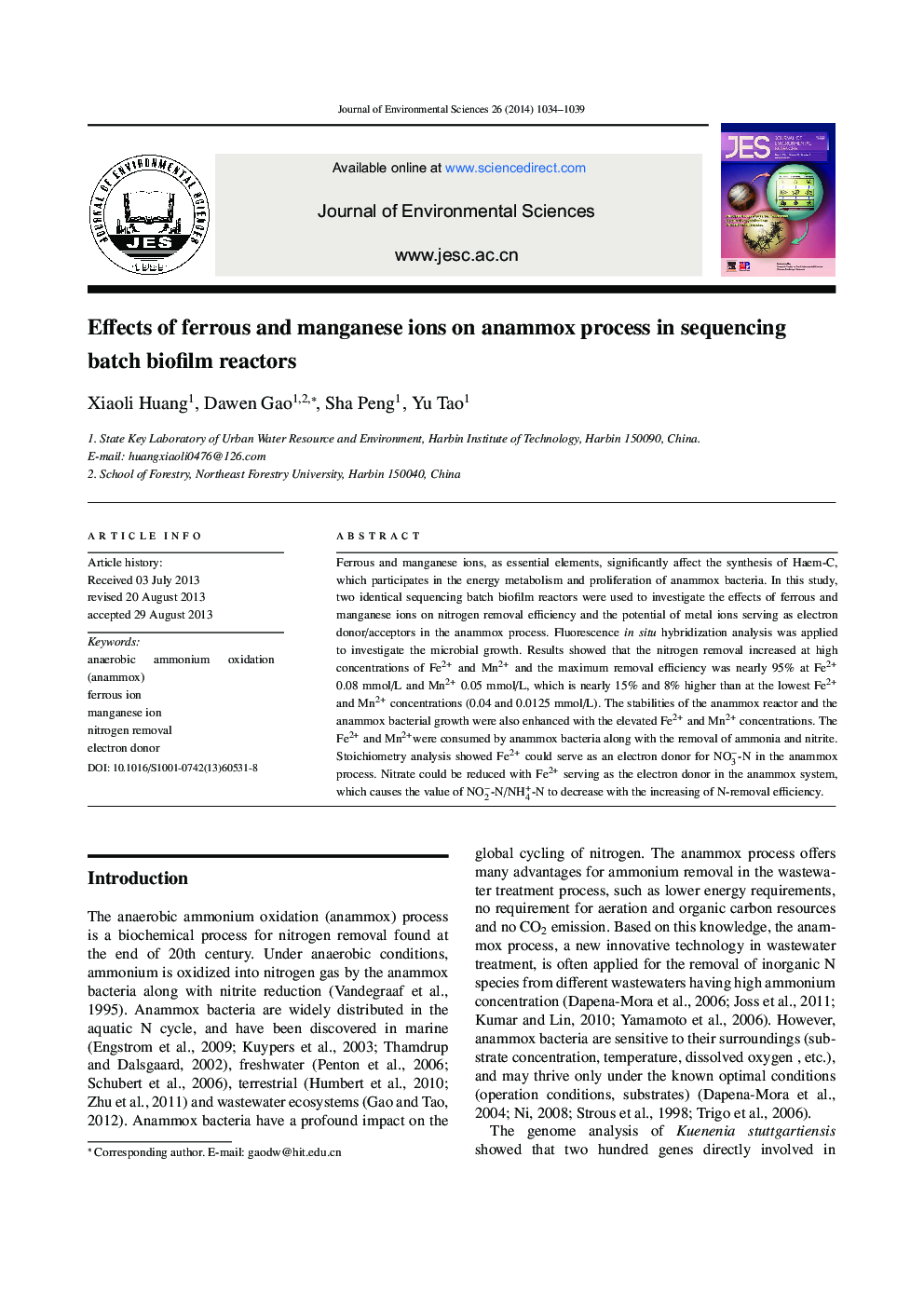| Article ID | Journal | Published Year | Pages | File Type |
|---|---|---|---|---|
| 4454141 | Journal of Environmental Sciences | 2014 | 6 Pages |
Ferrous and manganese ions, as essential elements, significantly affect the synthesis of Haem-C, which participates in the energy metabolism and proliferation of anammox bacteria. In this study, two identical sequencing batch biofilm reactors were used to investigate the effects of ferrous and manganese ions on nitrogen removal efficiency and the potential of metal ions serving as electron donor/acceptors in the anammox process. Fluorescence in situ hybridization analysis was applied to investigate the microbial growth. Results showed that the nitrogen removal increased at high concentrations of Fe2+ and Mn2+ and the maximum removal efficiency was nearly 95% at Fe2+ 0.08 mmol/L and Mn2+ 0.05 mmol/L, which is nearly 15% and 8% higher than at the lowest Fe2+ and Mn2+ concentrations (0.04 and 0.0125 mmol/L). The stabilities of the anammox reactor and the anammox bacterial growth were also enhanced with the elevated Fe2+ and Mn2+ concentrations. The Fe2+ and Mn2+ were consumed by anammox bacteria along with the removal of ammonia and nitrite. Stoichiometry analysis showed Fe2+ could serve as an electron donor for NO−3-N in the anammox process. Nitrate could be reduced with Fe2+ serving as the electron donor in the anammox system, which causes the value of NO−2-N/NH−4-N to decrease with the increasing of N-removal efficiency.
